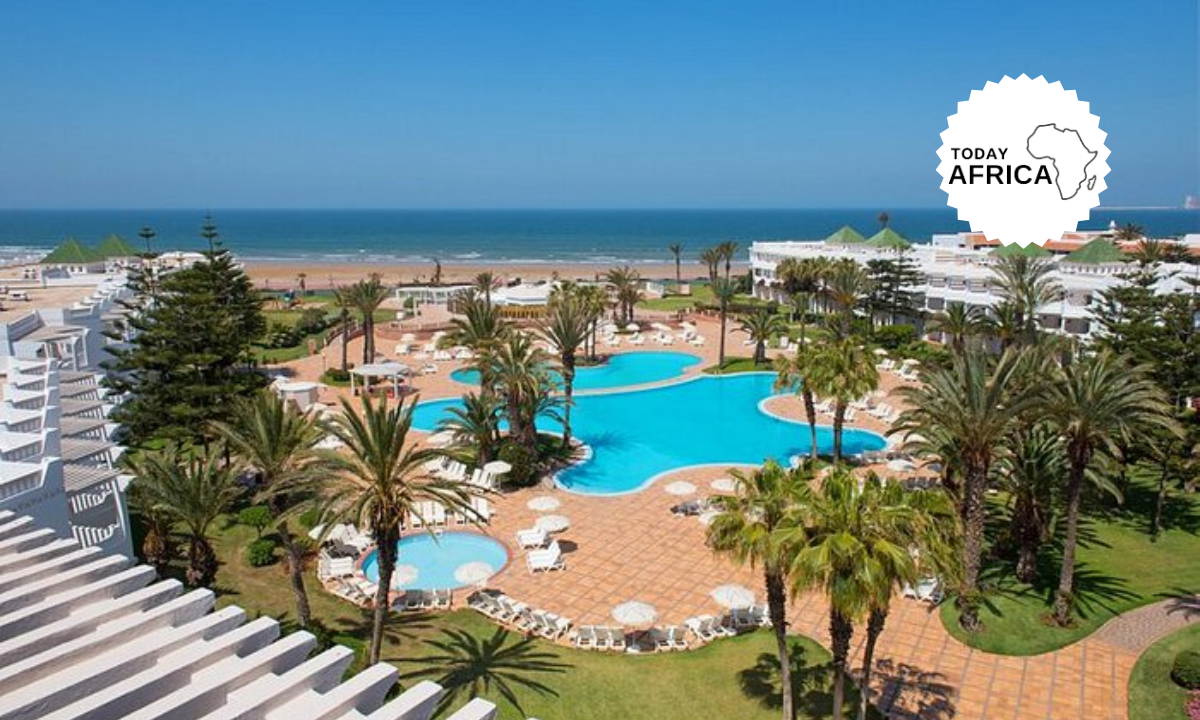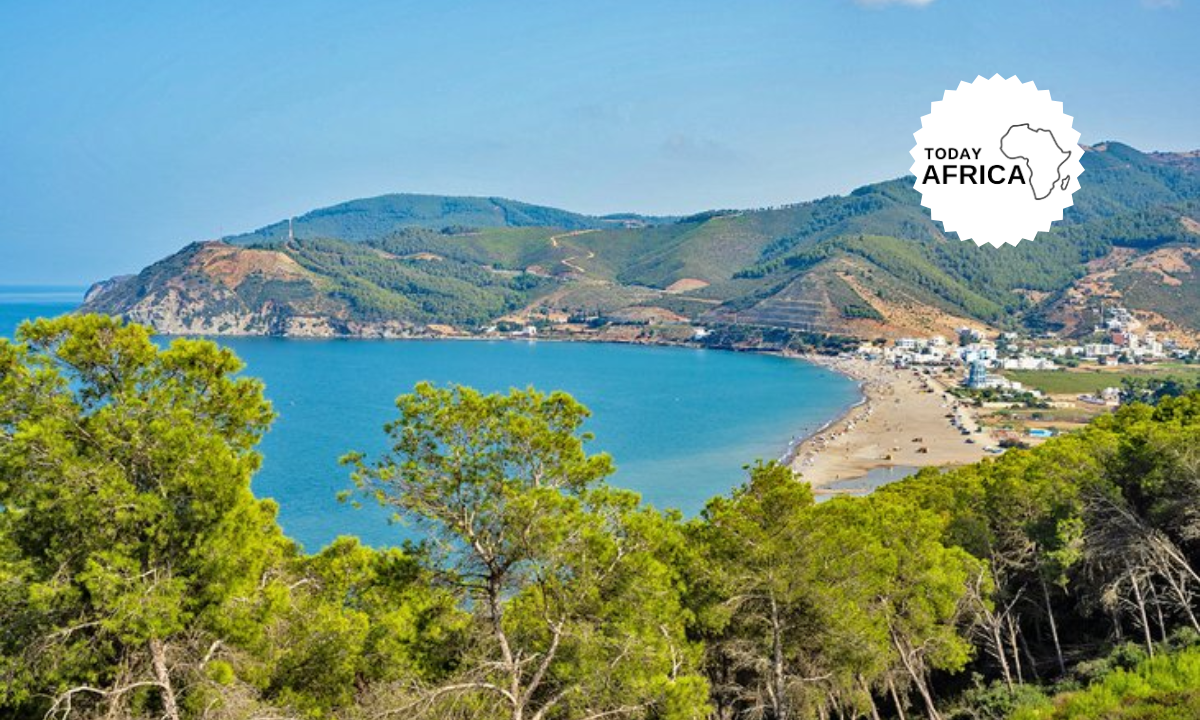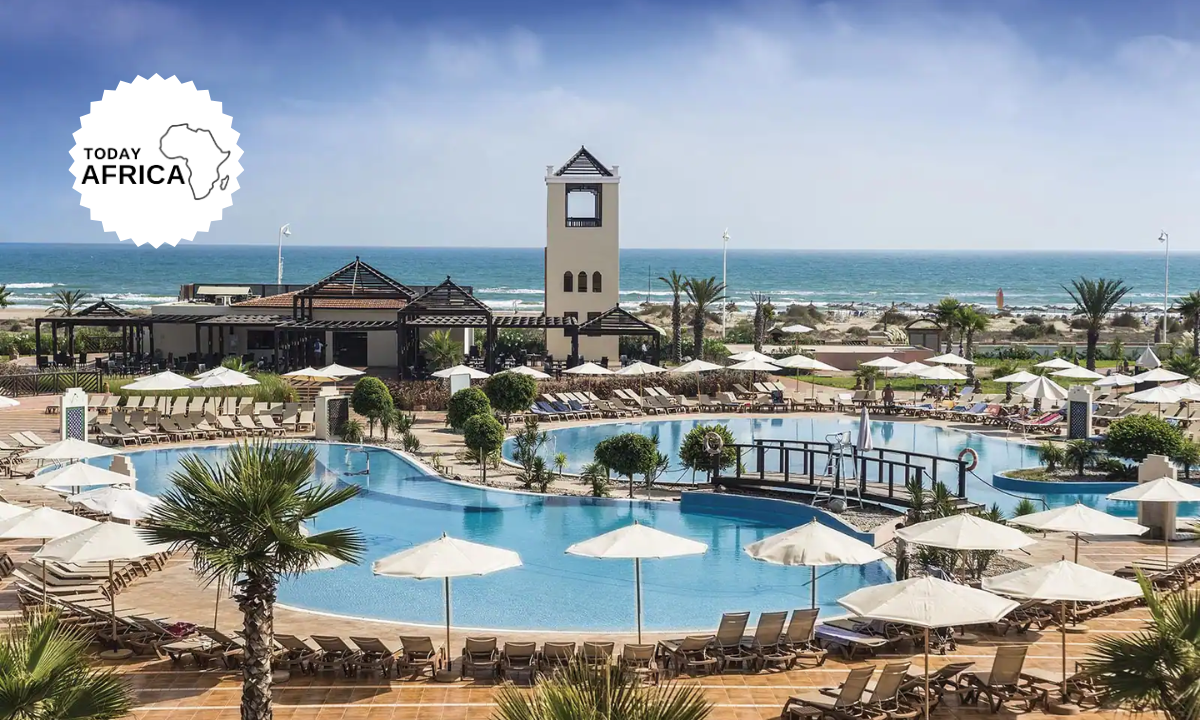Planning the clothes to wear in Tanzania safari can be a tricky task. For most of us, going on safari is a trip of a lifetime, and not something we do often.
Chances are, if you’re reading this blog post on clothes to wear in Tanzania safari, this is your first ever safari trip and you’re feeling a little out of your depth.
Probably you’re imagining looking like an intrepid adventurer, bounding off into the Serengeti in search of lions, fitting in seamlessly with your surroundings.
Perhaps with a stylish camera slung over your shoulder and maybe a sketch pad or two. But in truth, you’ve absolutely no idea what you’d need.
You don’t know what the weather is like, you don’t know what colours to wear to stay as camouflaged as possible. There are endless things to do in Tanzania, from wildlife safaris and mountain trekking to blissful beach days and unique cultural experiences.
From swimsuits to safari essentials, you’re probably wondering what to wear and what to pack for Tanzania.
Today Africa got you covered with our detailed clothes to wear in Tanzania safari to help you get prepared for your dream trip to this beautiful East African country. Click here for the best safari lodges in Tanzania and their prices.
The Weather in Tanzania in May
The weather in May is similar to that of November as it is the last shoulder month before the beginning of the peak summer season.
In the Ngorongoro Crater and Serengeti National Park areas, temperatures remain chilly at night but are a bit warmer than in November (dropping to 15C or 59F) and rise to 25C or 77F during the day. Rains are likely but typically quick and passing.
After months of wet weather, everything is green and lush and vegetation is high. The calves that were born during the January and February season are now older but still incredibly cute, and prolific wildlife fills the parks.
Zanzibar is still quiet, with fewer tourists, no crowds and emptier beaches. Rains are to be expected, but it never rains for the whole day, and if you’ve never seen a tropical storm, you will be amazed!
Temperatures stay warm but are more bearable than in the peak summer months hovering around 24C and 27C (75F to 81F). Despite the occasional rains, the hours of sunlight remain high at around 7h a day and the days are long (12h) with sunrise happening around 6.30am.
The Weather in Tanzania in September
September is considered the peak season in Tanzania and that means a chance to see the Great Migration, but more people everywhere that in November or May, and also cooler temperatures and less rain / more dust.
![Clothes to Wear in Tanzania Safari [With Infographic]](https://todayafrica.co/wp-content/uploads/2024/03/Blue-Simple-Dad-Appreciation-Facebook-Post-1200-×-720-px-1-12-1024x614.png)
We like this month because it is not part of the core peak season which runs from June to August and so the parks are not as crowded. Nobody wants to be looking at a lion family with another 50 cars!
The vegetation quite dry at this time of year as the rains have not yet arrived, and this means lots of opportunities to spot wildlife among the dried out savannah.
Zanzibar is also less busy than in the northern hemisphere summer months when Europeans flock to its beaches.
Temperatures are cool during the night, and pleasant during the day between 25C and 30C (77F to 85F). Days are long (12h) and sunny (8.5h of sunshine) with sunrise happening around 6.15am.
The Weather in Tanzania in November
November is the beginning of the low season and a great month to take advantage of more affordable prices because of the higher chance of rain. This is why our Luxury Tanzania safari + Zanzibar trip is scheduled for the first week of November every year.
In the Ngorongoro Crater and Serengeti National Park areas, temperatures are slowly increasing to 25C or 77F during the day but remain chilly at night (dropping to 11C or 55F), and there is a relatively low chance of rain.
After months of dry weather, the wildlife is looking forward to the “short rains”, or tropical storms, and will enjoy them as much as we will; there is nothing as incredible as the cloud formations against the endless savannah.
Zanzibar is quieter and has entered the low season. That means fewer tourist crowds and emptier beaches. Rains are to be expected, but will be short passing storms that make for dramatic photos; if you’ve never seen a tropical storm, you will be amazed!
Temperatures in tropical Zanzibar stay warm between 24C and 28C (75F to 82F). Despite the occasional rains, the hours of sunlight remain high at around 10h a day and the days are long (12h) with sunrise happening around 6am.
A Typical Day on Safari
No matter where you go on safari, you will typically wake up early, at around sunrise, with a freshly brewed cup of local coffee / tea followed by a game drive and later on, a full breakfast, or with a full breakfast followed by a full day game driver (with picnic lunch) or a morning game drive with lodge lunch.
In the late afternoon, you would head back out to enjoy the sunset in the bush, perhaps with a sundowner, before returning back to the lodge for a shower and pre-dinner drink by the camp fire.
If you are our on game drives all day, you will get a packed picnic lunch and stop in the park to enjoy it, usually at the designated picnic areas which are protected from the wildlife.
While on game drives, you will share an open-top 4WD car with other guests. That means the sun rays come through from the top and from the sides. In case of rain, the car top comes down, the windows are closed, and we can still watch wildlife through the glass.
When you leave the lodge in the early morning, the temperature will be pretty chilly, while in the heat of the day, it can be very hot.
Because of the change in temperatures during the day, you should pack in layers, and we recommend wearing long sleeves to protect yourself from insects (aka mosquitoes and tse tse flies) and from the sun, which shines horizontally in the early and late hours of the day and will come through the 4WD sides.
When at the lodge, casual is the name of the game and you should dress comfortably. You don’t need to dress up at night and closed toe shoes are usually best to fend off mosquitoes.
Clothes to Wear in Tanzania Safari
![Clothes to Wear in Tanzania Safari [With Infographic]](https://todayafrica.co/wp-content/uploads/2024/03/What-to-Pack-for-a-Safari-in-Kenya-1-410x1024.png)
- Lightweight and breathable clothing: Due to Tanzania’s hot and humid climate, it’s best to wear light and breathable fabrics such as cotton or linen. Opt for loose-fitting clothing to allow air circulation and keep you cool (If you choose open shoes be aware of dust, it won’t kill you anyways). Long-sleeved shirts and pants can also protect you from the sun and mosquito bites.
- Pack light layers: While it can get hot during the day, evenings can be more relaxed, especially in higher-altitude areas. Pack a light jacket or a long-sleeved shirt to layer up if needed.
- Choose comfortable footwear: Given the mix of urban areas, dusty streets, and potential outdoor activities, it’s essential to have comfortable shoes. Opt for closed-toe shoes or sandals with good grip and support. Avoid high heels or open-toe sandals, as they may not be suitable for uneven terrain or certain activities.
- Consider a hat and sunglasses: Protect yourself from the strong sun rays by wearing a wide-brimmed hat and sunglasses. This will shield your face and eyes from excessive heat and glare.
- Dress modestly and respect local customs: Tanzania is a culturally diverse country with a mix of religions and traditions. When visiting religious sites or interacting with local communities, it’s respectful to dress modestly (unless you want tourist stereotypes to prevail). Avoid revealing clothing or shorts that are too short, especially in more conservative areas (rural settings and urban areas are less of an issue).
- Swimwear for beach areas: If you plan to visit Tanzania’s beautiful beach areas, pack your favourite swimwear. However, remember to be mindful of cultural norms and wear appropriate beach attire (Please don’t wear T-strings, thongs etc, unless you can handle the eyes). Outside the beach areas, cover up with a beach cover-up or sarong. No one gives a shit if you are in big hotels.
Checklist of clothes to wear in Tanzania safari
Here is a checklist of every piece of clothing you should take and what to wear on your Tanzania safari. So you can refer to it while you pack for your trip.
- T-shirts and tank-tops
- Long-sleeved shirts
- Shorts
- Light long pants or convertible long-short pants
- Warm fleece pullover or jacket
- Bandana
- Heavy sweater, gloves, and toque for cold seasons
- Swimsuit
- Cotton socks and underwear
- Pyjamas
- Comfortable walking shoes
- Sandals or flip-flops
- Wide-brimmed hat
Footwear
A pair of sneakers or trail runners: hiking shoes are only necessary if you are going to climb a mountain, otherwise, choose lighter shoes.
Flip-flops or sandals: comfortable when you relax at your accommodation, go swimming or take a shower.
Toiletries
- Pack the usual things like soap, toothpaste, shampoo, and conditioner, etc.
- Sunscreen
- After-sun lotion
- Bug spray/ insect repellent with DEET
- Lip balm with SPF
- Wet wipes: if you have to go to the toilet or clean anything during your safari.
Medical kit
- Antidiarrheal medications
- Anti-malaria medications
- Hand sanitizer
- Painkillers like aspirin
- Nose spray
- Eye-drops: it can be very dusty on the African plains
- Plasters and anti-bacterial medicines
- Tweezer
Gadgets/electronics
- Camera
- Charger or/and batteries
- Extra memory card
- Headlamp/flashlight
- Phone: a lot of accommodations offer free WIFI
- Universal plug converters
- Binocular
Note: Put your gadgets in a waterproof bag to protect it against dust and rains.
![Clothes to Wear in Tanzania Safari [With Infographic]](https://todayafrica.co/wp-content/uploads/2024/03/Blue-Simple-Dad-Appreciation-Facebook-Post-1200-×-720-px-2-11-1024x614.png)
Documents
Passport: valid a minimum of 6 months prior to entry.
Yellow fever health card: they can ask for it upon arrival at the airport.
Visa: you can buy it upon arrival at the airport in Tanzania for USD 50.
Credit card
Cash (dollars)
Frequently Asked Questions
1. What is the dress code for Tanzania?
In Tanzania, modesty is the ideal and thus shorts and miniskirts as well as very tight clothing is considered inappropriate and quite provocative.
2. What do people dress like in Tanzania?
Tanzania is deeply conservative, so both men and women should cover their knees and shoulders in public. Traditionally, women only wear skirts, but it’s fine for foreign women to wear jeans or trousers – as long as they aren’t too form-fitting.
3. Is it OK to wear shorts in Tanzania?
Please dress modestly when sightseeing in Stone Town or visiting anywhere outside of the beach resorts in Zanzibar. Women should not wear sleeveless or revealing tops and short skirts or thigh-high shorts (Capri trousers or at least knee-length shorts are fine). Men should wear shirts, pants or knee-length shorts.
4. Can you wear black in Tanzania?
Dark colours attract Tsetse flies, so stay away from dark blue or black clothing – they have a painful bite!
5. What colors not to wear in Tanzania?
Plan to wear layers so you can acclimatize to weather variations because, depending on the time of year, early morning game drives can be rather chilly while daytime temperatures can get quite warm. Wear neutral or khaki-colored clothing instead of dark blue or black, which tends to draw tsetse flies.
6. Colours to wear in Tanzania?
Avoid bright colors, white and dark colors, and instead bring clothes of neutral colors, such as khaki, light bark or mid-tone brown, beige, olive and green, the typical colors used for safari clothing.
7. Can I show my shoulders in Tanzania?
Casual, comfortable clothes are key in Tanzania. However, regardless of the heat women are expected to cover up, so ensure that you bring clothes that cover your shoulders and your knees; think sarongs, t-shirts, maxi skirts and wraps that you can throw on when you head into the village.
8. What documents do I need to travel to Tanzania?
A passport valid for a minimum of six months beyond visa issuance and/or date of entry, and at least one blank visa page, is required. Visitors who enter on visas must present a roundtrip ticket and demonstrate they have sufficient funds for their stay.
9. What is prohibited in Tanzania?
Don’t use or carry illegal drugs. Penalties for drug offences are severe and include long prison sentences. It’s also illegal to possess pornographic material. Plastic bags are banned in Tanzania.
10. What should I pack for Tanzania safari?
- Camera and memory cards
- Binoculars
- Sunscreen
- Hand sanitizer and wet wipes
- Insect repellent
- Personal toiletries (soap, shampoo, toothbrush, eye drops etc)
- Malaria tablets
- Basic first aid kit and prescription medicines

![Clothes to Wear in Tanzania Safari This Year [+ Infographic]](https://todayafrica.co/wp-content/uploads/2024/03/Blue-Simple-Dad-Appreciation-Facebook-Post-1200-×-720-px-21-872x547.png)





![15 Best Beaches in Morocco to See This Year [& Essential Packing List]](https://todayafrica.co/wp-content/uploads/2023/12/Blue-Simple-Dad-Appreciation-Facebook-Post-1200-×-720-px-6-9.png)








